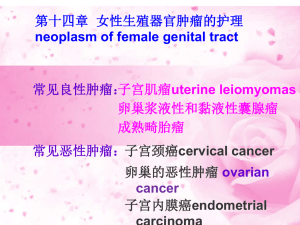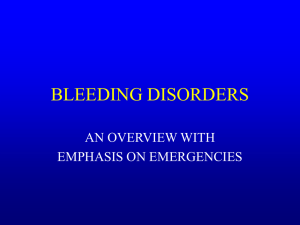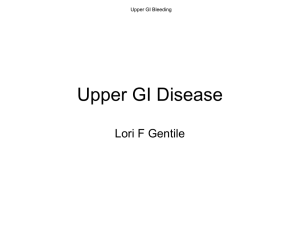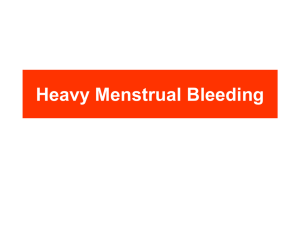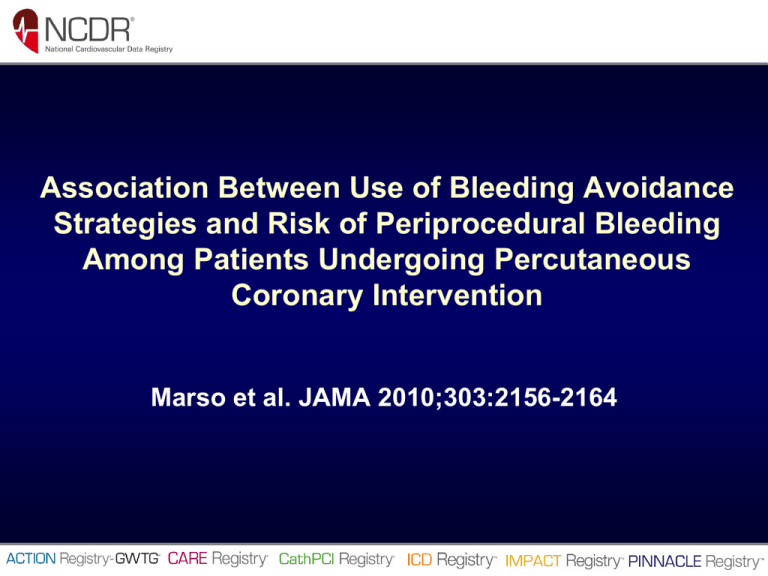
Association Between Use of Bleeding Avoidance
Strategies and Risk of Periprocedural Bleeding
Among Patients Undergoing Percutaneous
Coronary Intervention
Marso et al. JAMA 2010;303:2156-2164
Background
• Percutaneous coronary intervention (PCI) is performed
approximately 1 million times annually in the United States.
• The safety of PCI continues to be excellent with very low rates of
death, myocardial infarction (MI), and need for urgent
revascularization.
• PCI-related bleeding occurs in approximately 2-6% of patients in
national PCI databases; marked institutional variability in rates
exists.
• Bleeding complications are associated with increased length of
stay, hospital costs, and important clinical complications such as
death and MI.
Objective
• To describe the use of 2 bleeding avoidance
strategies—1) vascular closure devices and 2)
bivalirudin—and associated post-PCl bleeding
rates in a nationally representative PCI population.
• Examine clinical usage patterns of these
strategies as a function of bleeding risk.
Marso et al. JAMA 2010;303:2156-2164
Study Patients & Exclusions
• NCDR® CathPCI Registry ®
• Patients undergoing PCI via the femoral artery
• Exclusion criteria:
–
–
–
–
–
–
–
>1 PCI procedure during same stay
Incomplete data on bleeding
PCI via radial, brachial artery
Cardiogenic shock
Missing device data
Death in cath lab
Unknown bleeding event data
Marso et al. JAMA 2010;303:2156-2164
Candidate Bleeding Avoidance Strategies
• Bivalirudin
• Vascular closure devices
• Both therapies (bivalirudin + vascular closure)
Marso et al. JAMA 2010;303:2156-2164
Bleeding Risk Strata
• Bleeding risk score calculated for each patient using NCDR
bleeding risk model1
• Clinical elements used to calculate bleeding risk score:
–
–
–
–
–
–
–
–
1 Mehta
STEMI/non-STEMI
Female sex
Previous CHF
No previous PCI
NYHA/CCS Class IV CHF
PVD
Age
Estimated glomerular filtration rate
et al. Circ Cardiovasc Intervent 2009;2:222-229
Marso et al. JAMA 2010;303:2156-2164
Study Outcomes
• In-hospital bleeding according to NCDR data
definition:
– Requiring transfusion and/or
– Prolonged hospital stay and/or
– Decrease in hemoglobin >3 g/dL
Marso et al. JAMA 2010;303:2156-2164
Statistical Analysis
• Patients categorized into 3 groups of bleeding risk based
on NCDR bleeding risk score:
– Low (<1%)
– Intermediate (1-3%)
– High (>3%)
• Propensity score matching with site adjustment using 26
clinical variables for each bleeding avoidance strategy
performed to minimize confounding
• Population was well matched (standard difference plot on
next slide)
Marso et al. JAMA 2010;303:2156-2164
Standardized Difference Before and After
Propensity Matching
STEMI
NYHA Class III/IV
Previous PCI
Hyprcholesterolemia
Hypertension
History of Smoking
Age
BMI
PVD
Previous MI
Previous CABG
Diabetes
Renal Failure
CHF
White Race
Family History of CAD
Gender
Previous CHF
Cerebrovascular Disease
Previous Cardiac Transplant
Previous Valve Surgery
Chronic Lung Disease
Before Match
After Match
0
10
20
30
Standardized Difference
40
50
Marso et al. JAMA 2010;303:2156-2164
Study Population
1,759,408 Recordsfrom NCDRVersion 3.04
2004-2008
Exclusions: 236,473 (13%)
• >1 in-hospital PCI procedure: 91,874 (5%)
• Data incomplete for calculation of expected
bleeding rate: 69,247 (4%)
• PCI of a radial or non-femoral artery: 35,951 (2%)
• Cardiogenic shock: 34,842 (2%)
• Missing device data: 3,384 (<1%)
• Death in catheterization lab: 1,111 (<1%)
• Bleeding event unknown: 64 (<1%)
Final Study Population: N = 1,522,935
Manual Compression
N = 529,247 (35%)
Low risk: 146,557 (28%)
Intermediate risk: 261,363 (49%)
High risk: 121,327 (23%)
Vascular Closure Device
N = 363,583 (24%)
Low risk: 115,510 (32%)
Intermediate risk: 178,200 (49%)
High risk: 69,873 (19%)
Bivalirudin
N = 353,769 (23%)
Low risk:113,118 (32%)
Intermediate risk: 174,131 (49%)
High risk: 66,520 (19%)
Both Strategies
N = 276,336 (18%)
Low risk: 99,967 (36%)
Intermediate risk: 133,033 (48%)
High risk: 43,336 (16%)
Marso et al. JAMA 2010;303:2156-2164
Patient Characteristics
Total
(N=1,522,935)
Manual
Compression
(N = 529,247)
Vascular
Closure Devices
(N=363,583)
Bivalirudin
N = 353,769)
Both
(N = 276,336)
64.3 (12.1)
63.87 (12.33)
63.34 (12.26)
65.43 (11.86)
64.77 (11.80)
Male, N (%)
1,011,992 (66.5)
350,424 (66.21)
250,753 (68.97)
225,235 (63.67)
185,580 (67.16)
White, N (%)
1,289,673 (84.8)
449,617 (85.05)
301,908 (83.18)
303,317 (85.82)
234,831 (85.11)
Height, mean (SD), cm
171.30 (10.84)
171.22 (10.89)
171.73 (10.77)
170.81 (10.90)
171.50 (10.73)
Weight, mean (SD), kg
87.71 (20.45)
87.25 (20.42)
88.22 (20.28)
87.29 (20.71)
88.47 (20.40)
Body mass index, mean
(SD), kg/m2
29.8 (6.3)
29.7 (6.3)
29.8 (6.2)
29.8 (6.4)
30.0 (6.3)
Obesity , N (%)
643,500 (42.25)
219,470 (41.47)
153,233 (42.15)
150,813 (42.63)
119,984 (43.42)
Current CHF, N (%)
136,489 (8.96)
48,658 (9.19)
30,799 (8.47)
33,173 (9.38)
23,859 (8.63)
I
480,785 (31.57)
160,016 (30.24)
125,209 (34.44)
107,678 (30.44)
87,882 (31.81)
II
355,937 (23.37)
107,093 (20.24)
79,475 (21.86)
90,682 (25.64)
78,687 (28.48)
III
415,651 (27.30)
146,439 (27.67)
87,352 (24.03)
107,952 (30.52)
73,908 (26.75)
IV
270,376 (17.76)
115,629 (21.85)
71,508 (19.67)
47,412 (13.40)
35,827 (12.97)
Age, mean (SD), y
NYHA class, N (%)
All P<0.001
Marso et al. JAMA 2010;303:2156-2164
Patient Characteristics
Manual
Compression
(N = 529,247)
Vascular Closure
Devices
(N=363,583)
Bivalirudin
(N = 353,769)
Both
(N = 276,336)
509,455 (33.45)
173,024 (32.69)
113,130 (31.12)
129,335 (36.56)
93,966 (34.00)
Hypertension
1,190,098 (78.15)
405,122 (76.55)
272,906 (75.06)
290,085 (82.00)
221,985 (80.33)
Dyslipidemia
1,167,108 (76.64)
392,248 (74.12)
269,478 (74.12)
283,174 (80.05)
222,208 (80.42)
Never
600,315 (38.87)
196,423 (37.12)
143,554 (39.49)
138,026 (39.02)
114,318 (41.37)
Past
543,091 (35.17)
178,466 (33.72)
121,980 (33.55)
132,027 (37.32)
102,545 (37.11)
Current
400,845 (25.96)
154,297 (29.16)
97,995 (26.96)
83,681 (23.66)
59,439 (21.51)
73.77 (29.62)
73.60 (29.88)
75.02 (30.48)
72.46 (29.06)
74.09 (28.61)
392,815 (25.80)
135,320 (25.57)
100,704 (27.70)
86,660 (24.50)
70,131 (25.38)
PCI
576,207 (37.84)
182,518 (34.49)
125,649 (34.56)
151,835 (42.92)
116,205 (42.05)
CABG
291,773 (19.16)
98,038 (18.52)
59,980 (16.50)
79,189 (22.39)
54,566 (19.75)
Myocardial infarction
427,655 (28.08)
144,381 (27.28)
96,191 (26.46)
106,403 (30.08)
80,690 (29.20)
54,661 (10.33)
32,255 (8.87)
43,082 (12.18)
28,751 (10.40)
Total
(N=1,522,935)
Coronary artery disease risk factors, N (%)
Diabetes
Smoking , N (%)
Estimated glomerular filtration
rate, mean (SD)
Family history of coronary artery
disease , N (%)
Coronary artery disease history , N (%)
Other cardiovascular disease history , N (%)
CHF
All P<0.001
136,483 (8.96)
Marso et al. JAMA 2010;303:2156-2164
Patient Characteristics
Total
(N=1,522,935)
Manual
Compression
(N = 529,247)
Vascular
Closure
Devices
(N=363,583)
Bivalirudin
(N = 353,769)
Both
(N = 276,336)
Cerebrovascular
disease
174,811
(11.48)
60,260
(11.39)
34,638
(9.53)
48,214
(13.63)
31,699
(11.47)
Peripheral vascular
disease
181,787
(11.74)
65,568
(12.39)
33,064
(9.09)
50,678
(14.33)
29,477
(10.67)
Previous valve surgery
17,267 (1.13)
5,929 (1.12)
3,672 (1.01)
4,505 (1.27)
3,161 (1.14)
Previous transplant
3,463 (0.23)
1,257 (0.24)
732 (0.20)
899 (0.25)
575 (0.21)
Chronic lung disease
248,918
(16.35)
86,586
(16.36)
52,995
(14.58)
6,5139
(18.41)
44,198
(15.99)
83,029 (5.45)
30,004 (5.67)
18,028 (4.96)
21,369 (6.04)
13,628 (4.93)
Renal failure
All data are N (%)
All P<0.001
Marso et al. JAMA 2010;303:2156-2164
Admission Characteristics
Total
(N=1,522,935)
Manual
Compression
(N = 529,247)
Vascular
Closure Devices
(N=363,583)
Bivalirudin
(N = 353,769)
Both
(N = 276,336)
No symptoms
196,190 (12.88)
55,961 (10.57)
42,224 (11.61)
54,346 (15.36)
43,659 (15.80)
Atypical chest pain
113,339 (7.44)
32,570 (6.15)
27,031 (7.44)
27,758 (7.85)
25,980 (9.40)
Stable angina
260,582 (17.11)
73,109 (13.81)
57,179 (15.73)
69,093 (19.53)
61,201 (22.15)
Unstable angina
527,624 (34.65)
168,813 (31.90)
113,413 (31.19)
142,473 (40.27)
102,925 (37.25)
Non-STEMI
238,305 (15.65)
98,866 (18.68)
64,921 (17.86)
43,239 (12.22)
31,279 (11.32)
STEMI
186,810 (12.27)
99,900 (18.88)
58,796 (16.17)
16,843 (4.76)
11,271 (4.08)
Elective
758,110 (49.79)
220,576 (41.68)
157,348 (43.28)
212,562 (60.09)
167,624 (60.67)
Urgent
553,524 (36.35)
196,634 (37.16)
140,023 (38.52)
121,995 (34.49)
94,872 (34.34)
Emergency
209,465 (13.76)
110,990 (20.97)
65,758 (18.09)
19,011 (5.37)
13,706 (4.96)
1,662 (0.11)
968 (0.18)
422 (0.12)
172 (0.05)
100 (0.04)
PCI type
Salvage
All data are N (%)
All P<0.001
Marso et al. JAMA 2010;303:2156-2164
Hospital Characteristics
Total
(N=1,522,935)
Manual
Compression
(N = 529,247)
Vascular Closure
Devices
(N=363,583)
Bivalirudin
(N = 353,769)
Both
(N = 276,336)
West
244,853 (16.11)
71,085 (13.47)
73,065 (20.15)
41,801 (11.83)
58,902 (21.36)
Northeast
177,930 (11.71)
56,353 (10.68)
60,120 (16.58)
28,392 (8.04)
33,065 (11.99)
Midwest
505,125 (33.24)
198,609 (37.63)
119,220 (32.88)
104,043 (29.45)
83,253 (30.19)
South
591,568 (38.93)
201,679 (38.22)
110,237 (30.40)
179,071 (50.68)
100,581 (36.47)
Rural
177,441 (15.92)
59,727 (15.44)
54,008 (21.02)
31,542 (11.48)
32,164 (16.38)
Urban
937,476 (84.08)
327,222 (84.56)
202,931 (78.98)
243,165 (88.52)
164,158 (83.62)
23,838 (1.57)
7,895 (1.49)
4,948 (1.36)
5,988 (1.69)
5,007 (1.81)
1,356,756 (89.09)
465,238 (87.91)
319,915 (87.99)
318,550 (90.04)
253,053 (91.57)
142,341 (9.35)
56,114 (10.60)
38,720 (10.65)
29,231 (8.26)
18,276 (6.61)
1095.81
(795.18)
1058.04
(704.88)
981.16
(732.27)
1303.62
(782.65)
1052.94
(678.44)
Region, N (%)
Community type, N (%)
Profit type, N (%)
Government
Private/community
University
Annual PCI volume, mean (SD)
All P<0.001
Marso et al. JAMA 2010;303:2156-2164
High‡
N=301,056
Bleeding Rates*
Low*
N=475,152
*Overall bleeding = 30,429 (2%)
Intermediate†
N=746,727
7
6.1
6
Bleeding (%)
5
4.6
2.8
2.3
2.1
2
M = Manual comp.
C = Closure only
B = Bival only
BC = Bival+closure
3.8
4
3
*NCDR bleeding risk <1%
†NCDR bleeding risk 1-3%
‡NCDR bleeding risk >3%
1.9
1.6
1.4
0.9
1
2.3
0.9 0.9
0.6
0.8
0.4
0
M C B BC
Overall
M C B BC
Low
(<1%)
M C B BC
Intermediate
(1-3%)
M C B BC
High
(>3%)
P<0.001
all
intra-risk group
comparisons
Estimated Bleeding Reductions—All Patients
(Propensity Adjusted)
Treatment
(N)
Bleeding
N (%)
Odds Ratio
(95% CI)
NNT
(95% CI)
Reduction in Bleeding
Events per 1,000 Patients
Treated
(95% CI)
Manual compression
508,455
13,597 (2.7)
1 [Reference]
Vascular closure devices
205,606
5,050 (2.5)
0.77 (0.73-0.80)
148 (130-175)
6.7 (5.7-7.7)
Bivalirudin
172,471
3,224 (1.9)
0.67 (0.63-0.70)
118 (107-132)
8.5 (7.6-9.3)
Both
130,378
1,361 (1.0)
0.38 (0.35-0.42)
70 (68-74)
14.2 (13.5-14.8)
Total
1,016,910
23,232 (2.3)
Marso et al. JAMA 2010;303:2156-2164
Estimated Bleeding Reductions (Propensity Adjusted)
Treatment
(N)
Bleeding
N (%)
Odds Ratio
(95% CI)
NNT
(95% CI)
Reduction in Bleeding Events per 1,000
Patients Treated (95% CI)
Manual compression
144,594
1,320 (0.9)
1 [Reference]
Vascular closure devices
54,217
532 (1.0)
1.07 (0.93-1.22)
NS
NS
Bivalirudin
48,378
296 (0.6)
0.65 (0.56-0.77)
315 (247-470)
3.2 (2.1-4.0)
Both
41,999
166 (0.4)
0.42 (0.34-0.51)
188( 167-222)
5.3 (4.5-6.0)
Total
289,188
2,314 (0.8)
Manual compression
252,898
5,722 (2.3)
1 [Reference]
Vascular closure devices
103,095
2,077 (2.0)
0.76 (0.71-0.81)
169 (141-217)
5.9 (4.6-7.1)
Bivalirudin
85,800
1,311 (1.5)
0.69 (0.63-0.74)
153 (131-187)
6.5 (5.3-7.6)
Both
64,003
573 (0.9)
0.39 (0.35-0.44)
80 (75-86)
12.5 (11.6-13.3)
Total
505,796
9,683 (1.9)
Manual compression
110,963
6,555 (5.9)
1 [Reference]
Vascular closure devices
48,294
2,441 (5.1)
0.79 (0.75-0.82)
81 (66-109)
12.3 (9.2-15.3)
Bivalirudin
38,293
1,617 (4.2)
0.67 (0.62-0.73)
56 (49-66)
17.9 (15.1-20.6)
Both
24,376
622 (2.6)
0.42 (0.38-0.47)
33 (31-36)
30.5 (27.9-32.8)
Total
221,926
11,235 (5.1)
Low Risk, <1%
Intermediate Risk, 1-3%
High Risk, >3%
Marso et al. JAMA 2010;303:2156-2164
Bleeding Avoidance Strategy Use by
Pre-PCI Bleeding Risk
Risk-Treatment Paradox
45
High‡
N=301,056
Low*
N=475,152
Intermediate†
N=746,727
40.3
40
35
Bleeding (%)
35
*NCDR bleeding risk <1%
†NCDR bleeding risk 1-3%
‡NCDR bleeding risk >3%
30.8
30
24.3 23.8
25
23.9 23.3
M = Manual comp.
C = Closure only
B = Bival only
BC = Bival+closure
23.2 22.1
21
17.8
20
14.4
15
10
5
0
M
C
B BC
Low
(<1%)
M
C
B BC
Intermediate
(1-3%)
M
C
B
High
(>3%)
BC
P<0.001
for all
intra-risk group
comparisons
Limitations
•
•
•
•
Observational, non-randomized study
Potential unmeasured confounding
No data on activated clotting time
Contraindications to use of bleeding avoidance therapies:
– Bivalirudin: in the setting of other anticoagulants, PCI of chronic
total occlusion
– Vascular closure devices: high risk anatomy
• Data insufficient to warrant abandoning use of manual
compression in favor of vascular closure devices:
– Adequately powered randomized trial assessing bleeding
endpoints is needed
Conclusions
• In 1.5 million PCI patients in the NCDR:
– Post-PCI bleeding occurred in 2%
– Use of bivalirudin plus vascular closure devices was
associated with an absolute 3.8% lower rate in PCI
related bleeding in high risk patients
– To prevent 1 bleeding event in high risk patients would
require treating 33 patients with both therapies
– High risk patients were least likely to receive both
strategies (risk-treatment paradox)
Marso et al. JAMA 2010;303:2156-2164


